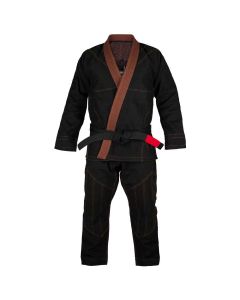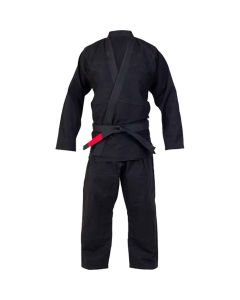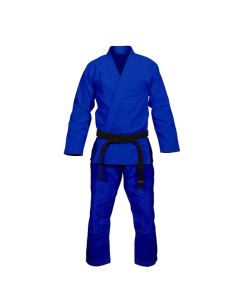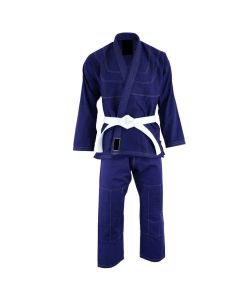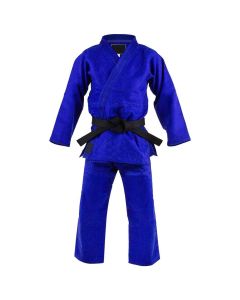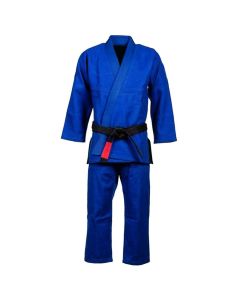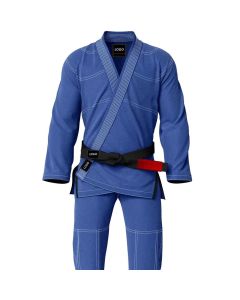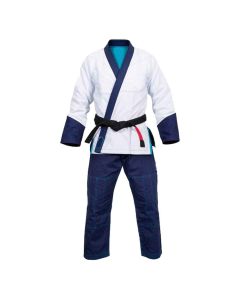In the realm of martial arts, few disciplines rival the technicality and strategic prowess of Brazilian Jiu-Jitsu (BJJ). Central to this renowned martial art is the iconic BJJ Gi, a specialized uniform that distinguishes practitioners and plays a pivotal role in the practice of this dynamic combat sport. In this article, we delve into the world of BJJ Gi's, exploring their significance, features, and impact on the art of Brazilian Jiu-Jitsu.
Understanding BJJ Gi's: The Backbone of Brazilian Jiu-Jitsu
The BJJ Gi, short for Brazilian Jiu-Jitsu Gi, is a uniform designed specifically for the practice of BJJ. Comprising a jacket, pants, and belt, the Gi provides functionality, durability, and a distinct identity to practitioners. Also referred to as a Kimono, the BJJ Gi draws inspiration from traditional Japanese martial arts uniforms, reflecting the historical roots and influence of judo on Brazilian Jiu-Jitsu.
The Features that Define BJJ Gi's
When examining a BJJ Gi, several key features come to the forefront, each serving a crucial purpose in the context of Brazilian Jiu-Jitsu.
- Fabric: BJJ Gi's are typically crafted from high-quality, heavyweight cotton or a blend of cotton and polyester. The material's thickness ensures durability, allowing the Gi to withstand the rigorous grappling and ground-fighting techniques synonymous with BJJ.
- Reinforcements: Reinforcements are strategically placed in specific areas of the Gi, such as the sleeves, lapels, and knees. These reinforcements enhance the strength of the Gi, reducing the risk of tearing during intense training sessions and competitions.
- Fit and Design: BJJ Gi's are designed to be relatively form-fitting, allowing opponents to grip and control each other effectively. However, the Gi should still offer freedom of movement to execute techniques without hindrance. The design of the Gi often includes patches, logos, and embroidery that represents the practitioner's affiliation with a specific academy or team.
The Role of BJJ Gi's in Brazilian Jiu-Jitsu
The BJJ Gi plays a vital role in Brazilian Jiu-Jitsu, influencing both the technical aspects of the art and the cultural identity of its practitioners.
- Grip and Control: The fabric of the BJJ Gi provides ample gripping opportunities, allowing practitioners to manipulate and control their opponents effectively. Grips on the sleeves, collar, and pants play a pivotal role in executing sweeps, submissions, and positional dominance. The Gi becomes an extension of the practitioner's technique, providing a unique advantage within the realm of BJJ.
- Adaptability and Challenge: The inclusion of the Gi in BJJ introduces a different dimension to the martial art. The added fabric creates friction and presents new opportunities and challenges compared to No-Gi (grappling without a Gi). The Gi demands a distinct set of strategies, grips, and submissions, expanding the practitioner's arsenal of techniques and enhancing their overall understanding of BJJ.
- Tradition and Culture: Just as the BJJ Gi reflects the roots of Brazilian Jiu-Jitsu in judo, it also carries a sense of tradition and cultural identity. Patches, embroidery, and team affiliations showcased on the Gi serve as visual representations of a practitioner's lineage, dedication, and connection to the wider BJJ community.
Choosing the Right BJJ Gi
Selecting the right BJJ Gi is a personal and important decision for practitioners. Factors to consider include size, fit, durability, and the rules and regulations of specific competitions. Additionally, individual preferences regarding color, design, and brand influence the decision-making process.
Ultimately, finding a BJJ Gi that offers comfort, durability, and reflects one's personal style enhances the overall training experience and contributes to a practitioner's confidence on the mats.
Conclusion
The BJJ Gi holds a special place in the world of Brazilian Jiu-Jitsu, embodying the essence of tradition, technique, and community. As a fundamental tool of the art, the BJJ Gi provides practitioners with unique opportunities for grip, control, and technical growth. Moreover, it serves as a visual representation of a practitioner's journey, affiliations, and dedication to the art of Brazilian Jiu-Jitsu. Whether on the competition stage or the training mats, the BJJ Gi remains an iconic symbol within the BJJ community, uniting practitioners and inspiring them to embrace the power and possibilities that Brazilian Jiu-Jitsu offers.




